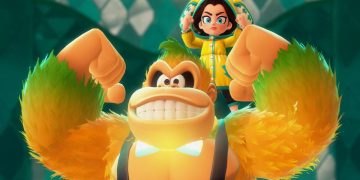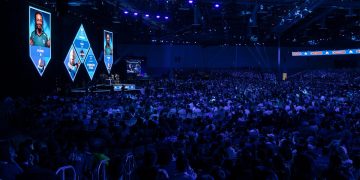Sure thing! Here’s a more “human” version of the article you provided:
—
Why trust our reviews? Because we basically dive headfirst into testing gadgets for ages. We compare, poke, prod—it’s a whole thing. Check out our testing process if you’re curious.
In the world of semiconductors, power really runs the show. Seriously, get a low-power, high-performance chip in there, and you’ve basically got a magic trick. Engineers can make stuff portable with smaller, even passive, thermal designs. Suddenly, your device is lighter, smaller, and has juice for days.
While others chased big power designs, Nintendo zigged when everyone zagged. They grabbed Nvidia’s tiny, low-power Tegra X1 for the original Switch. Fast forward to today: 150 million units sold, and bam—the Switch 2 is now here. New chip, bigger and more vibrant screen, larger Joy-Cons, extra USB Type-C port—it’s like they threw in everything but the kitchen sink.
I’m all about PC gaming, but my husband? Die-hard Nintendo fanboy. So naturally, a Nintendo console lives under our TV. I never really adored Switch as a handheld, but wow, it was my gateway to magical adventures. Like, stepping out of that cave in Breath of the Wild and seeing Hyrule? Sunglasses might’ve been necessary.
Kudos to Nintendo and pals for wringing every last drop out of that basic hardware for ages. Creativity thrived, but time? It waits for no one. Pokémon Scarlet and Violet? Even the most hardcore trainers were grumbling. Tears of the Kingdom felt like it was built for a yet-to-exist console. And Fortnite on Switch? Well, bless your heart if that’s your first experience.
With new hardware, the Switch 2 is poised to lead millions into the gaming future. We bought one, tried all the things, and have some thoughts.
Generally, it builds on what the original established, but with some quirky choices and omissions that’ll make you wonder, “Nintendo, what’s the deal here?”
Nintendo and Nvidia collaborated once more on the Switch 2’s central chip. This time it’s a bespoke SoC. They’re hush-hush on the specifics, but Digital Foundry got the scoop. It’s got eight Arm Cortex-A78C cores—throwback to 2020. Benchmarks aren’t easy to find, but similar stuff runs around 1,000 points on Geekbench 6. But DF says the Switch CPU is cruising at 1 GHz—so yeah, not gonna compete with your latest phone.
The SoC shares space with an Nvidia Ampere GPU, chock-full of 1,536 CUDA cores. That’s a fancy way of saying: “It’s solid but not smashing the charts.” Rated for 3.072 TFLOPS docked and 1.7 TFLOPS handheld, it’s closer to a flashy iGPU than a desktop beast.
12GB of LPDDR5X RAM comes in handy—9GB is for the game wizards. Way better than the Switch 1’s 4GB.
Teraflops and bandwidth are just numbers. The nitty-gritty of data flow on the Switch 2 isn’t crystal clear. But on a fixed spec, optimization is simpler than on a mixed-up PC landscape.
No solo power rating for the SoC, but 19W overall in docked mode. We confirmed that, and it’s about 11-12W handheld. Battery tests are ongoing.
The Switch 2 flaunts a 7.9-inch, 1920 x 1080 LCD. Way sharper and more vibrant than its predecessor’s murky screen. HDR10 claims are here, but let’s manage expectations—no cutting-edge OLED stuff.
Still, it’ll make you squint in a Cyberpunk 2077 neon glare—a nice touch. Colors? Vibrant. Mario’s red cap practically jumps out at you.
A couple welcome upgrades: a slick 120 Hz refresh rate and VRR (Variable Refresh Rate). That’s perfect for developers. You might not always notice it, though. Fortnite isn’t pushing the envelope yet, for instance.
One major bummer: VRR only works on the internal display, not on TVs or monitors via the dock. PS5 and Xbox Series X got it covered—soooo, what gives, Nintendo?
Topside, we have buttons, sensors, vents, and game cartridge slots. Two USB-C ports are great; one’s perfect for charge-play without tangles.
The stereo speakers? They’re okay. Won’t blow you away, but they work.
The kickstand takes a massive leap. Went from an afterthought to something solid and worth having. Rock solid, actually.
Joy-Con 2’s magnetic system is cool. Snaps in, pops out—no alignment dances. Feels durable, but stick drift remains a heartache down the line.
Better handheld experience? Not quite. The edges are sharper; it’s heavier in the wrong ways. I’d prefer my cozily rounded old Switch for handheld sessions.
Comparing performance, metrics are a challenge, but you see and feel the boost. Cyberpunk 2077 gives you two modes — Performance and Quality. Quality aims for 1080p at 30 FPS, Performance goes up to 40. Performance is smoother, especially on the internal screen.
CD Projekt Red is using DLSS for everything it can do, but it still feels softer than my PC’s pristine edges. Night City’s deserted streets reveal limits, yet it’s still a solid version for Nintendo loyalists.
Breath of the Wild on Switch 2—just wow. Feels fresh, fluid, and very much alive. I spent hours sucked in again.
Playing Fortnite, the difference from past gens is stark. It’s about time the game hit 60 FPS, making battles way more fun.
In all this, I found a few things to whine about: storage space—just increase it, Nintendo! Wireless speeds are meh, and VRR really needs expansion.
Still, it’s a solid piece of kit. Comes down to heart versus brain—is it your style? Then it’s probably worth grabbing.
We’ll be diving deeper, especially into battery life. Stay tuned for more chaos—uh, insights.












































